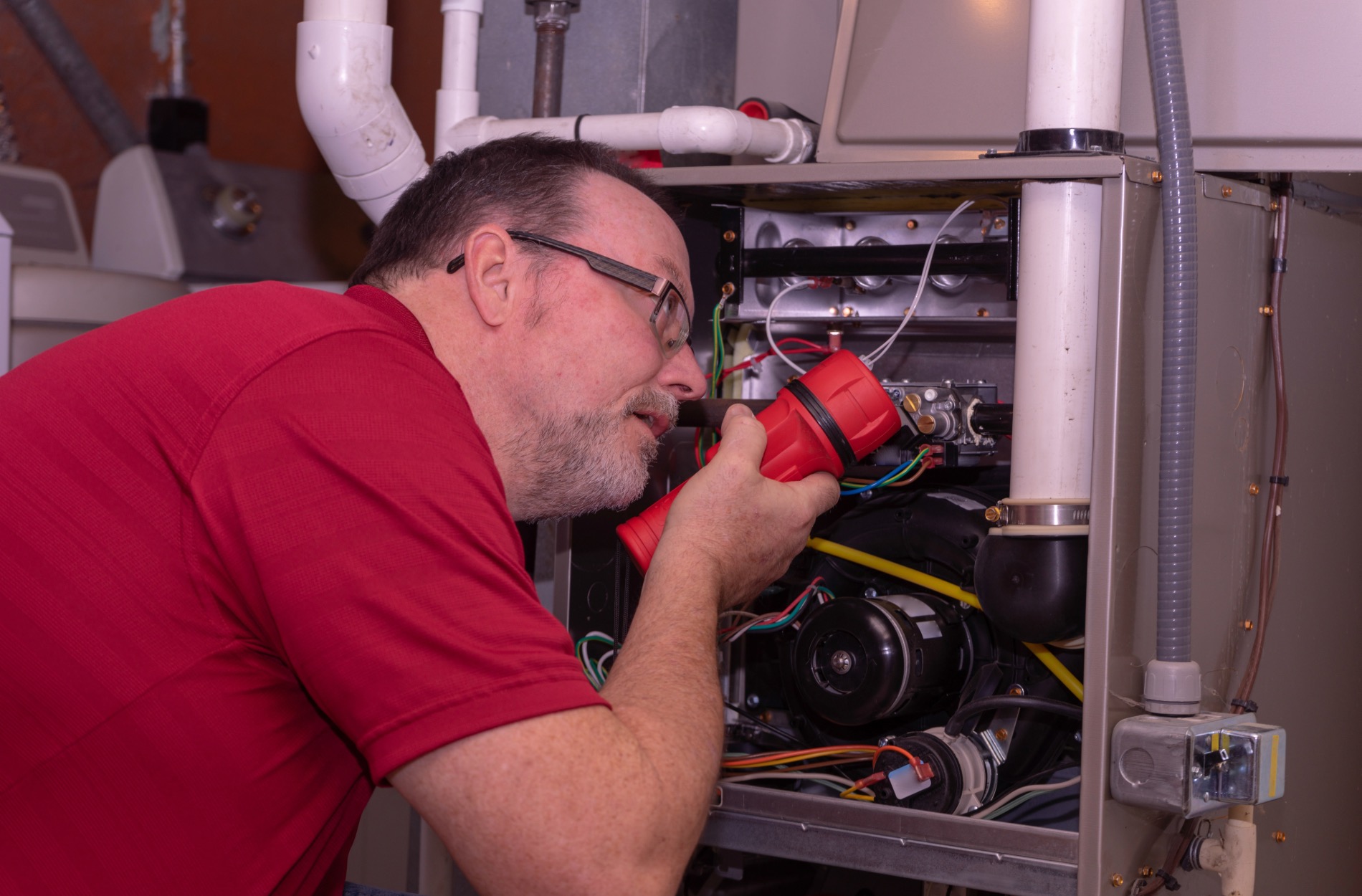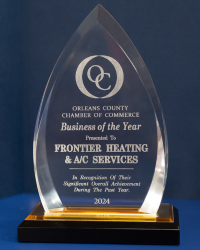A well-functioning furnace is essential for maintaining a comfortable home. When issues arise, it’s important to know what to look out for and how they can be resolved. Our technicians are skilled in diagnosing and fixing a range of common furnace problems, ensuring your home remains warm and your system operates efficiently.
Common Symptoms of Furnace Issues
Identifying symptoms early can save your furnace from severe damage. Here are some common signs that indicate your furnace may need repair:
1. Strange Noises:
If you hear banging, rattling, or squealing, it could indicate a mechanical problem. These sounds often come from loose or broken parts, issues with the blower motor, or problems with the ignition.
2. Uneven Heating:
If certain areas of your home are warmer or colder than others, your furnace might not be distributing heat properly. This can be due to problems with the ductwork or a failing blower motor.
3. Frequent Cycling:
If your furnace frequently turns on and off, it may indicate a thermostat issue or a problem with the wiring. This can also happen if the furnace is overheating due to blocked airflow.
4. Unusual Smells:
Burning or musty odors can suggest issues such as electrical problems or mold in the ductwork. These smells should be addressed immediately to prevent further complications.
5. High Energy Bills:
An unexpected increase in your energy bills can be a sign that your furnace is working harder than it should. Efficiency issues often stem from dirty filters, failing components, or poor insulation.
These symptoms often necessitate immediate attention to prevent more significant damage or even furnace replacement. Our professionals are skilled at diagnosing and resolving these issues, ensuring your furnace operates smoothly and efficiently.
Diagnosing and Fixing Blower Motor Problems
The blower motor is a critical component of your furnace, responsible for circulating air through the ducts and into your home. When problems arise with the blower motor, our technicians follow a systematic process to diagnose and fix the issue accurately.
Steps to Diagnose Blower Motor Problems:
1. Inspection:
Our professionals begin with a thorough inspection of the blower motor and surrounding components. This helps identify visual signs of wear or damage.
2. Electrical Testing:
We use specialized tools to test the electrical connections and ensure there are no loose wires or faulty circuits. This step is crucial for identifying issues that may not be visible.
3. Performance Testing:
Our technicians test the blower motor’s performance by running the furnace and observing its operation. An abnormal sound or inconsistent airflow can indicate a failing blower motor.
Common Fixes for Blower Motor Issues:
1. Lubrication:
Blower motors with moving parts often need lubrication to function smoothly. We apply the appropriate lubricant to reduce friction and wear.
2. Cleaning:
Dust and debris can accumulate on the blower motor, affecting its performance. Our professionals clean the motor and surrounding areas to ensure optimal airflow.
3. Component Replacement:
If the blower motor or its parts are damaged beyond repair, we replace them with high-quality components to restore full functionality.
4. Adjustments:
Sometimes, minor adjustments to the motor or its housing can resolve the issue. This includes tightening loose parts or realigning components for better performance.
By following these diagnostic and repair steps, our technicians can effectively address blower motor problems, ensuring your furnace functions efficiently and your home remains comfortable.
Addressing Ignition and Pilot Light Failures
When your furnace fails to ignite or the pilot light goes out, it can cause a complete loss of heating. Our professionals are skilled in diagnosing and repairing these issues to restore your furnace’s functionality.
Signs of Ignition and Pilot Light Problems:
Furnace Won’t Start:
If your furnace doesn’t start, the problem may lie in the ignition system or the pilot light.
Frequent Pilot Light Outages:
If the pilot light keeps going out, it could indicate a problem with the thermocouple or gas supply.
Delayed Ignition:
If you hear a loud bang when the furnace starts, delayed ignition could be the cause, which is dangerous and needs immediate attention.
Steps to Fix Ignition and Pilot Light Problems:
1. Inspect and Clean:
Our technicians inspect the ignition system and pilot light components for dirt and debris. They clean these parts to ensure proper function.
2. Check Gas Supply:
We check the gas supply to ensure it’s consistent and sufficient. A faulty gas valve or supply line may need repair.
3. Replace Thermocouple or Ignitor:
A failing thermocouple or ignitor can prevent the pilot light from staying lit or the furnace from igniting. Our professionals replace these components if they are faulty.
4. Adjust Settings:
Sometimes, simple adjustments to the pilot light or ignition settings can resolve the issue. We make these adjustments carefully to maintain safe and efficient operation.
By addressing these ignition and pilot light issues, we ensure that your furnace ignites reliably, providing consistent and safe heating for your home.
Tackling Issues with Thermostats and Control Systems
Thermostat and control system problems can lead to improper furnace operation and discomfort in your home. Our technicians are trained to diagnose and correct these issues promptly.
Common Issues with Thermostats and Control Systems:
Inaccurate Temperature Readings:
If the thermostat displays incorrect temperatures, it may cause the furnace to turn on and off at the wrong times.
Non-Responsive Thermostat:
A thermostat that doesn’t respond to adjustments can prevent the furnace from operating.
Wiring Problems:
Faulty wiring can disrupt communication between the thermostat and the furnace, leading to operational issues.
Steps to Fix Thermostat and Control System Problems:
1. Inspection and Calibration:
Our technicians inspect the thermostat for any visible damage or dust buildup. They also calibrate the device to ensure accurate temperature readings.
2. Replace Batteries:
Sometimes, a simple battery replacement can resolve non-responsive thermostat issues. We start with this basic troubleshooting step.
3. Check and Repair Wiring:
We inspect the wiring for any loose connections or damage. Faulty wiring is repaired or replaced to restore proper communication between the thermostat and furnace.
4. Install New Thermostat:
If the thermostat is outdated or beyond repair, our professionals can install a new, more efficient model. This ensures accurate temperature control and better furnace performance.
By tackling thermostat and control system issues, we enable your furnace to operate more efficiently, providing the right amount of heat when you need it.
Conclusion
Keeping your furnace in good condition requires understanding common issues and knowing when to seek professional help. From diagnosing and fixing blower motor problems to addressing ignition failures and thermostat issues, our technicians at Frontier Heating are equipped to handle all your furnace repair needs. Timely intervention and regular maintenance can prevent minor issues from escalating into major problems, ensuring your furnace operates efficiently and reliably.
If you notice any symptoms of furnace issues or need expert assistance, contact us today. Our skilled professionals are ready to provide comprehensive furnace repair services in Batavia, ensuring your home stays warm and comfortable.














